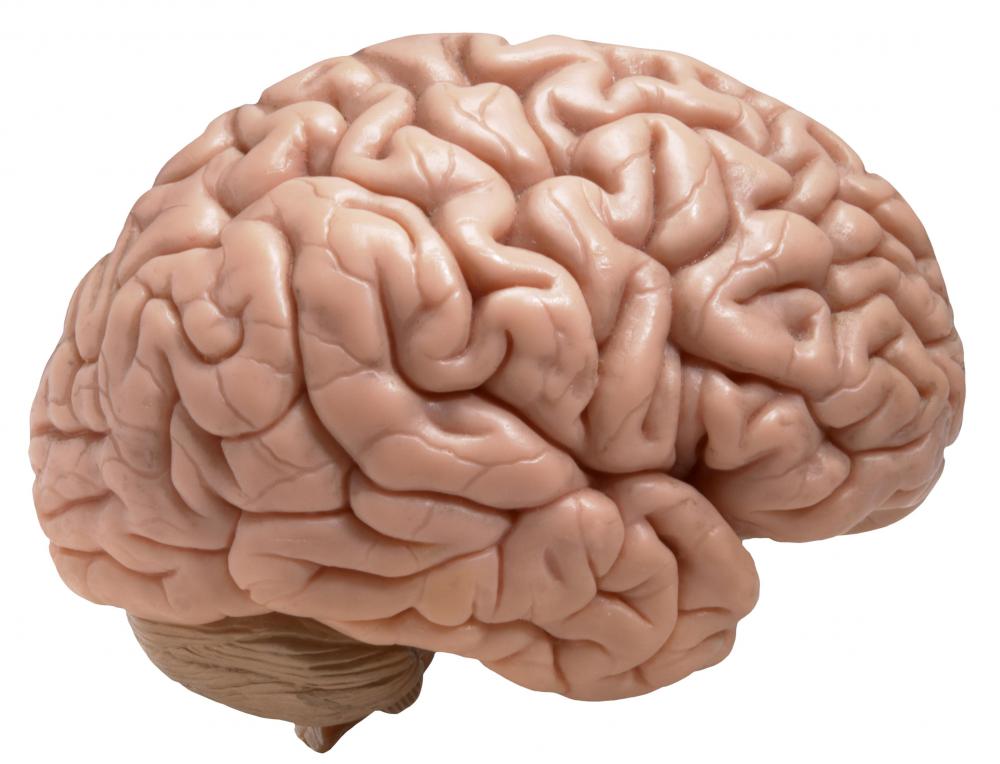At WiseGEEK, we're committed to delivering accurate, trustworthy information. Our expert-authored content is rigorously fact-checked and sourced from credible authorities. Discover how we uphold the highest standards in providing you with reliable knowledge.
What Is the Dorsal Striatum?
The dorsal striatum is the part of the brain thought to play an important part in making decisions, motivation, and rewards. It is made up of two subregions, the the lentiform nucleus and the caudate nucleus, and is part of the basal ganglia. In some texts, the dorsal striatum is called the striated body or the corpus striatum, and some experts use the term to define the combination of the internal capsule and the basal ganglia.
Human brains are composed of the left and right hemispheres, each of which has an inner layer, called the white matter, and an outer covering, called the gray matter. A portion of the corpus striatum is found within the brain's white matter and is called the lentiform nucleus. Most of the striatum lies within the gray matter, however, and comprises the caudate nucleus. The internal capsule divides the lenticular and caudate nuclei and is contained within the white matter.

The basal ganglia, which includes the dorsal striatum, the substantia nigra, and the subthalamic nucleus, are an integral part of both mental and physical functions. A damaged striatum may contribute to a neurological condition called Huntington's disease, and failure of the substantia nigra to produce certain pigmented cells that manufacture dopamine may contribute to Parkinson's disease. Scientists believe that the basal ganglia are associated with certain behavioral disorders, such as obsessive-compulsive disorder and Tourette's syndrome. It's also believed that the corpus striatum and basal ganglia contribute to many decisions people make on a daily basis.

For example, researchers conducting an experiment on why gamblers choose specific numbers discovered that the dorsal striatum appeared to contribute to the decision. Some gamblers choose numbers that have proven lucky for them previously, which researchers called the reinforcement learning strategy. Other gamblers analyzed which numbers or colors had won recently, looked for patters and bet according to what they thought was due, a strategy researchers called the gambler's fallacy. The study showed that the dorsal striatum was more active in subjects who placed bets according to the reinforced learning strategy.
Dopamine, which plays an important role in mood and motivation, is produced by the substantia nigra. The chemical contributes to emotional pleasure and the ability of a person to control his or her impulses. Researchers theorize that an under-active dorsal striatum may contribute to behaviors such as overeating and might explain why some drug users do not become addicted.
AS FEATURED ON:
AS FEATURED ON:












Discuss this Article
Post your comments